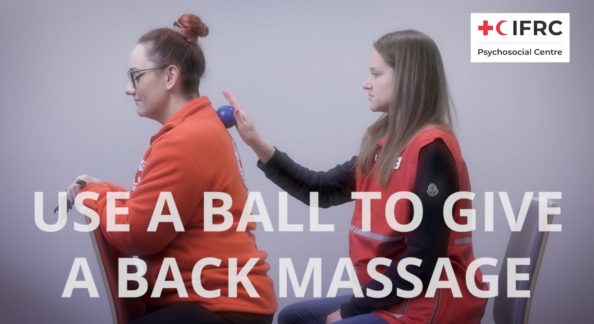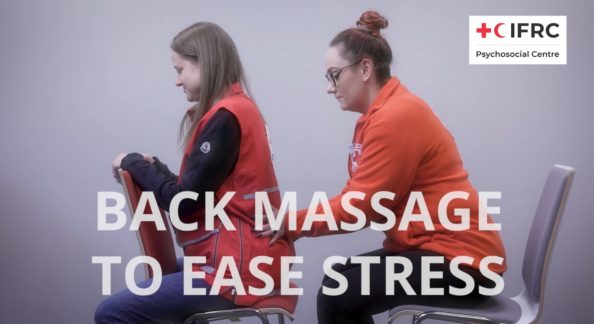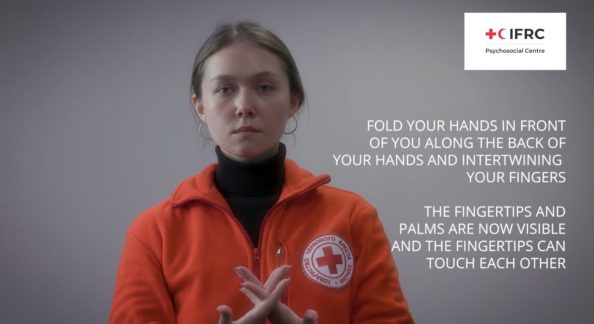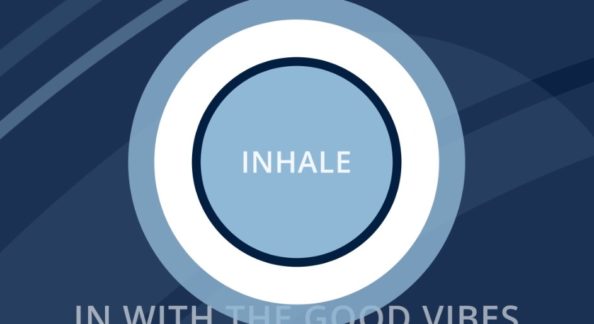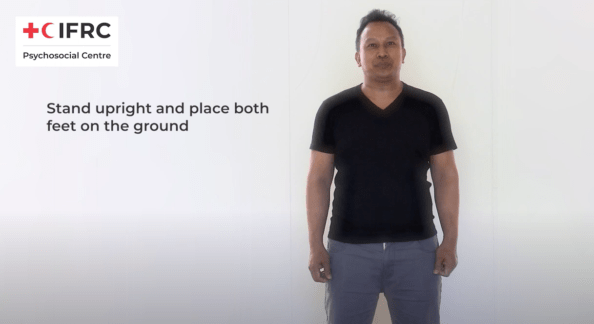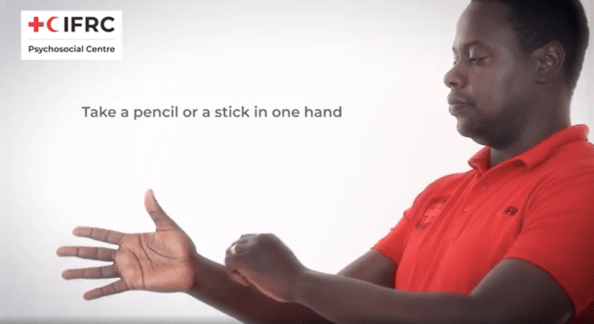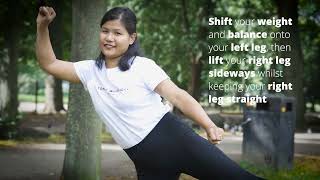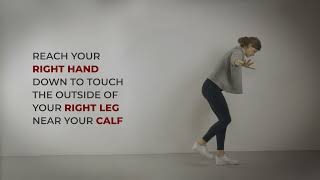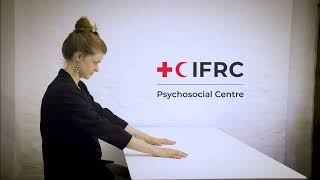Self-care exercises
Tennis ball group meditation
The group stands in a close circle with each group member holding a tennis ball in the palm of the right hand to the right side of the body. The facilitator explains and demonstrates with slow movements the exercise:
Step 1: Place the ball in the open palm of the left hand in front of the body. Step 2: Move the right hand back to the right side to receive a ball from the person standing next to them to the right, and at the same time, move the left hand to the left side placing the ball in the open palm of the person standing next to them. Turn the direction of the circle passing the balls the other way around. Repeat the instructions and go at a slow speed at first.
The group, as a whole, must find a speed and rhythm that enables everyone to feel comfortable. Everyone will have to keep an eye out for everyone else and cannot focus on their own dexterity only. Once the movements are in place, the speed and rhythm of the movements will synchronize, group members feel greater harmony, and the repetitive movements have a meditative impact.
Step 1: Place the ball in the open palm of the left hand in front of the body. Step 2: Move the right hand back to the right side to receive a ball from the person standing next to them to the right, and at the same time, move the left hand to the left side placing the ball in the open palm of the person standing next to them. Turn the direction of the circle passing the balls the other way around. Repeat the instructions and go at a slow speed at first.
The group, as a whole, must find a speed and rhythm that enables everyone to feel comfortable. Everyone will have to keep an eye out for everyone else and cannot focus on their own dexterity only. Once the movements are in place, the speed and rhythm of the movements will synchronize, group members feel greater harmony, and the repetitive movements have a meditative impact.
Using a massage ball for stress release
This self-care exercise using a massage ball can be done to help release tension in achy muscles after long hours spent in the office. A massage ball can get to those areas that can be hard to reach such as the upper back, buttocks, and feet.
“Knots” or “trigger points” can be massive sources of pain in our bodies and using self-massage techniques or having a friend, loved one, or colleague help us with a quick massage can provide a quick stress release.
Additionally, massage balls are affordable and small so they can easily fit into a suitcase or handbag to use wherever you are.
“Knots” or “trigger points” can be massive sources of pain in our bodies and using self-massage techniques or having a friend, loved one, or colleague help us with a quick massage can provide a quick stress release.
Additionally, massage balls are affordable and small so they can easily fit into a suitcase or handbag to use wherever you are.
Shoulder and neck stretches
Try these shoulder and neck stretches to release tension and stress in the body:
1. Stand or sit up straight with a nice long back.
2. Place your left arm behind your waist with the palm turning outwards and your right hand over the top of your head with the fingertips reaching your left ear.
3. Breathe in and slowly release the air whilst lowering your right ear towards your right shoulder. Hold the position for a few easy breaths. Turn the head gently so your right chin is near your right shoulder. Hold this position for a few easy breaths. Lower the hand on top of your head, roll both shoulders gently, and repeat the exercise on the other side.
1. Stand or sit up straight with a nice long back.
2. Place your left arm behind your waist with the palm turning outwards and your right hand over the top of your head with the fingertips reaching your left ear.
3. Breathe in and slowly release the air whilst lowering your right ear towards your right shoulder. Hold the position for a few easy breaths. Turn the head gently so your right chin is near your right shoulder. Hold this position for a few easy breaths. Lower the hand on top of your head, roll both shoulders gently, and repeat the exercise on the other side.
A healing touch
Research shows human touch can have a powerful effect on reducing stress levels. When we are touched, our brain release hormones such as Oxycontin, which promotes feelings of relaxation and reduces stress. Massage therapy is a form of touch that can provide these same benefits, as well as the added benefits of physical manipulation of muscles and tissues. By combining the power of touch with massage techniques, individuals can experience significant reductions in stress and improved overall well-being.
Online breathing exercise
There are many ways to release stress and reduce body tension - a walk outside, meditation, or various exercises to relax the body and remove physical discomfort.
But on busy days, many of us are stuck behind our desks without the option to get up and turn our backs to the screen. On those days, use this breathing exercise to find inner calm.
But on busy days, many of us are stuck behind our desks without the option to get up and turn our backs to the screen. On those days, use this breathing exercise to find inner calm.
Calming by awakening the senses
Being able to regulate how you feel and to modulate the level of mental bodily arousal are vital skills for humanitarians who need to be clear headed to be able to make good decisions in challenging work environments.
This exercise releases oxytocin, which is a feel-good brain chemical and hormone that help us stay calm and collected. A release of oxytocin also makes us feel connected to others. It stimulates the skin with its myriads of sensorial nerves.
This exercise releases oxytocin, which is a feel-good brain chemical and hormone that help us stay calm and collected. A release of oxytocin also makes us feel connected to others. It stimulates the skin with its myriads of sensorial nerves.
Breathe in a colour you like
An easy way to calm yourself when anxious or worried is to do a breathing exercise combined with a mental image.
• Begin by taking a deep in-breath and let the exhalation be long. Let the bottom of the lungs fill and empty with each in-and out-breath.
• Next, imagine a favourite and pleasant colour being inhaled with the in-breath. Fill the lungs with a beautiful colour you like and find pleasant.
• Then exhale a least favourite colour with the out-breath. Expel the air imagining the least favourite colour leaving the body.
• Continue as long as you like.
• Begin by taking a deep in-breath and let the exhalation be long. Let the bottom of the lungs fill and empty with each in-and out-breath.
• Next, imagine a favourite and pleasant colour being inhaled with the in-breath. Fill the lungs with a beautiful colour you like and find pleasant.
• Then exhale a least favourite colour with the out-breath. Expel the air imagining the least favourite colour leaving the body.
• Continue as long as you like.
Strengthen your back
Staff and volunteers who are based in an office often spend long periods of time sitting at a desk in a hunched position, with poor posture or placing strains on certain muscle groups.
In order to maintain the strength and flexibility in your back it is important to stretch and move some regions of your spine. The link between your thoracic and lumbar spine is an often neglected region.
This simple 'Strengthen your Back' exercise can be done at home or in the office.
In order to maintain the strength and flexibility in your back it is important to stretch and move some regions of your spine. The link between your thoracic and lumbar spine is an often neglected region.
This simple 'Strengthen your Back' exercise can be done at home or in the office.
Balance and Motion
It is important to maintain a good balance through regular exercises. Practising balance through movement is more challenging than static postures, but it nevertheless increases one’s body awareness, coordination, and strength. This exercise requires your entire body to work together to maintain stability. It promotes stability, in both the body and the mind. It is therefore important to quiet the mind and stay focused on the movement itself.
Release Wrist Tensions
Typing away for hours can lead to stiffness and pain in the wrists. The aim of this exercise is to ease the tension and minimize pain in the wrists through loose hand movements.
Sit or stand upright with your upper arms hanging down by the side of your body. Lift the underarms to a horizontal position and let your hands hang with the fingertips pointing downwards. Next, flip your hands with the palms facing upward and then flop them down again.
Continue this movement at a consistent speed, vigorously moving your hands and palms up and down as if you are air-drying your hands. Flip-flop your hands like this for 20 – 30 seconds, flipping your hands approximately one time per second. Keep the shoulders down and relaxed throughout the exercise.
Sit or stand upright with your upper arms hanging down by the side of your body. Lift the underarms to a horizontal position and let your hands hang with the fingertips pointing downwards. Next, flip your hands with the palms facing upward and then flop them down again.
Continue this movement at a consistent speed, vigorously moving your hands and palms up and down as if you are air-drying your hands. Flip-flop your hands like this for 20 – 30 seconds, flipping your hands approximately one time per second. Keep the shoulders down and relaxed throughout the exercise.
Ease Menstrual Pain
This exercise is designed to help females with menstrual pain by moving the back and pelvic regions.
First, place your palms on the table and spread your fingers. If the space and clothing allow, you may also do this exercise on all four on the ground. Next, stretch your back like a cat, rounding your back thoroughly and lazily, while looking in toward your belly button area so the spine forms a C shape.
Bring awareness to the muscles along the spine that are being stretched, while taking deep, relaxing breaths. On your next inhale, begin to arch your back, stretching all the way from your tailbone to the base of the skull as you look up. Repeat this exercise a few more times.
This exercise not only brings movement into areas that impact menstrual pain, but it also mobilizes and stretches major muscles along the spine and front.
First, place your palms on the table and spread your fingers. If the space and clothing allow, you may also do this exercise on all four on the ground. Next, stretch your back like a cat, rounding your back thoroughly and lazily, while looking in toward your belly button area so the spine forms a C shape.
Bring awareness to the muscles along the spine that are being stretched, while taking deep, relaxing breaths. On your next inhale, begin to arch your back, stretching all the way from your tailbone to the base of the skull as you look up. Repeat this exercise a few more times.
This exercise not only brings movement into areas that impact menstrual pain, but it also mobilizes and stretches major muscles along the spine and front.
Yawning Exercise
Yawning is an often overlooked, yet contagious and effective reflex to relax. It activates the parasympathetic nervous system, which is responsible for the body's rest and digestion response. This exercise therefore focuses on the benefits of yawning to relax the mind and the body.
Begin this exercise by opening your mouth and relaxing your lower jaw and tongue. Then lift your palate to allow an ‘O’ shape to form in the back of your mouth. Begin to move your lower jaw from side to side and invite a yawn on your next inhale while keeping your shoulders relaxed. If it feels good, gently stretch your arms over your head. Take a moment to see if your mind and body feels different than before doing this exercise.
Begin this exercise by opening your mouth and relaxing your lower jaw and tongue. Then lift your palate to allow an ‘O’ shape to form in the back of your mouth. Begin to move your lower jaw from side to side and invite a yawn on your next inhale while keeping your shoulders relaxed. If it feels good, gently stretch your arms over your head. Take a moment to see if your mind and body feels different than before doing this exercise.
Wrist Tension Exercise
This speedy relaxation exercise, which can be done sitting or standing at your desk, is a quick fix for tense wrists.
Place your elbows on the desk. Lift your underarms and hands to your shoulders and let your thumbs touch your shoulders. Then let your arms and hands drop heavily on to the table. Allow your underarms and hands to be so heavy they make a sound when landing on the desk. Repeat this movement three to five times to release the tensions in your arms, wrists and hands. End the relaxation exercise by shaking your arms.
Place your elbows on the desk. Lift your underarms and hands to your shoulders and let your thumbs touch your shoulders. Then let your arms and hands drop heavily on to the table. Allow your underarms and hands to be so heavy they make a sound when landing on the desk. Repeat this movement three to five times to release the tensions in your arms, wrists and hands. End the relaxation exercise by shaking your arms.
Relaxing the shoulders and neck
When persons are stressed or feeling nervous, their shoulders automatically lift, which tenses their neck. Tensions in the shoulders and neck easily lead to tension-based headaches. Daily stretches of the muscles can minimize these headaches and prevent the nervous system from increasing tensions throughout the body. This exercise aims to release any built-up tension in the neck and shoulders.
More videos
Latest news
- Mental Health Matters: New global report on MHPSS progress within the Movement is now available in Arabic, French and Spanish
- Heartbeat of Humanity: Survivior Guilt and Moral Injury
- New Mental Health & Psychosocial Support in Humanitarian Emergencies Micro-credential
- Vacancy: Senior Communications Officer
- World Children’s Day 2023


